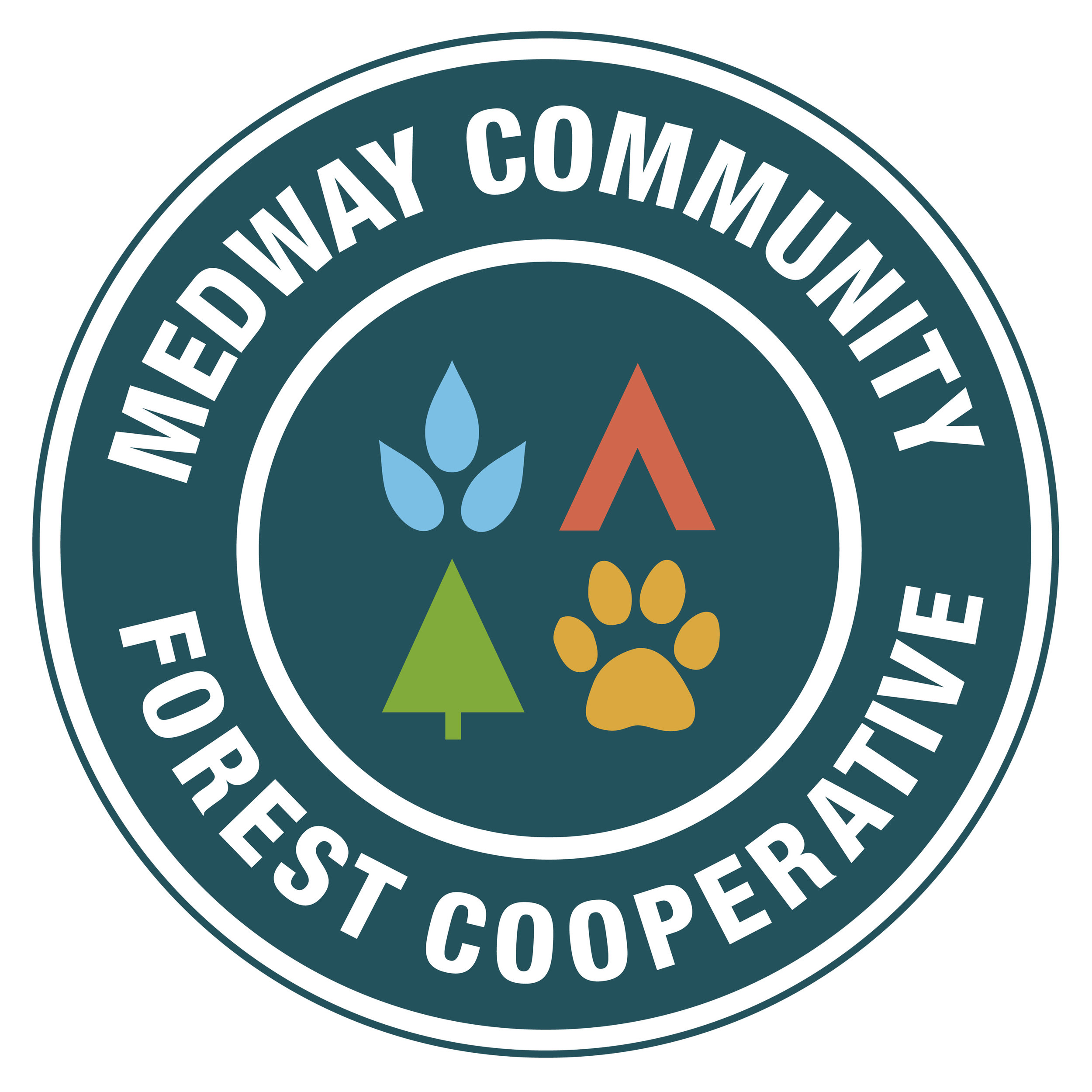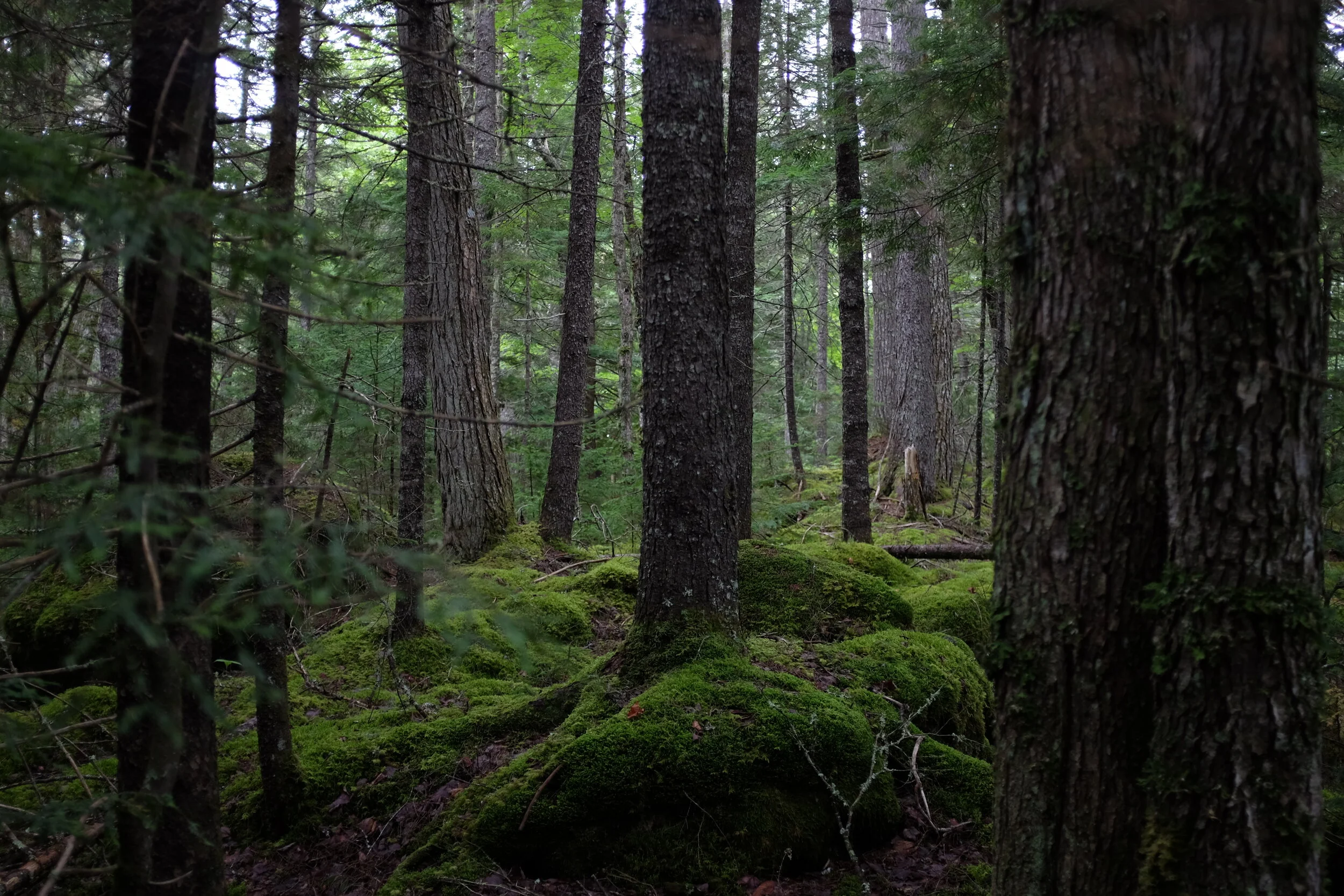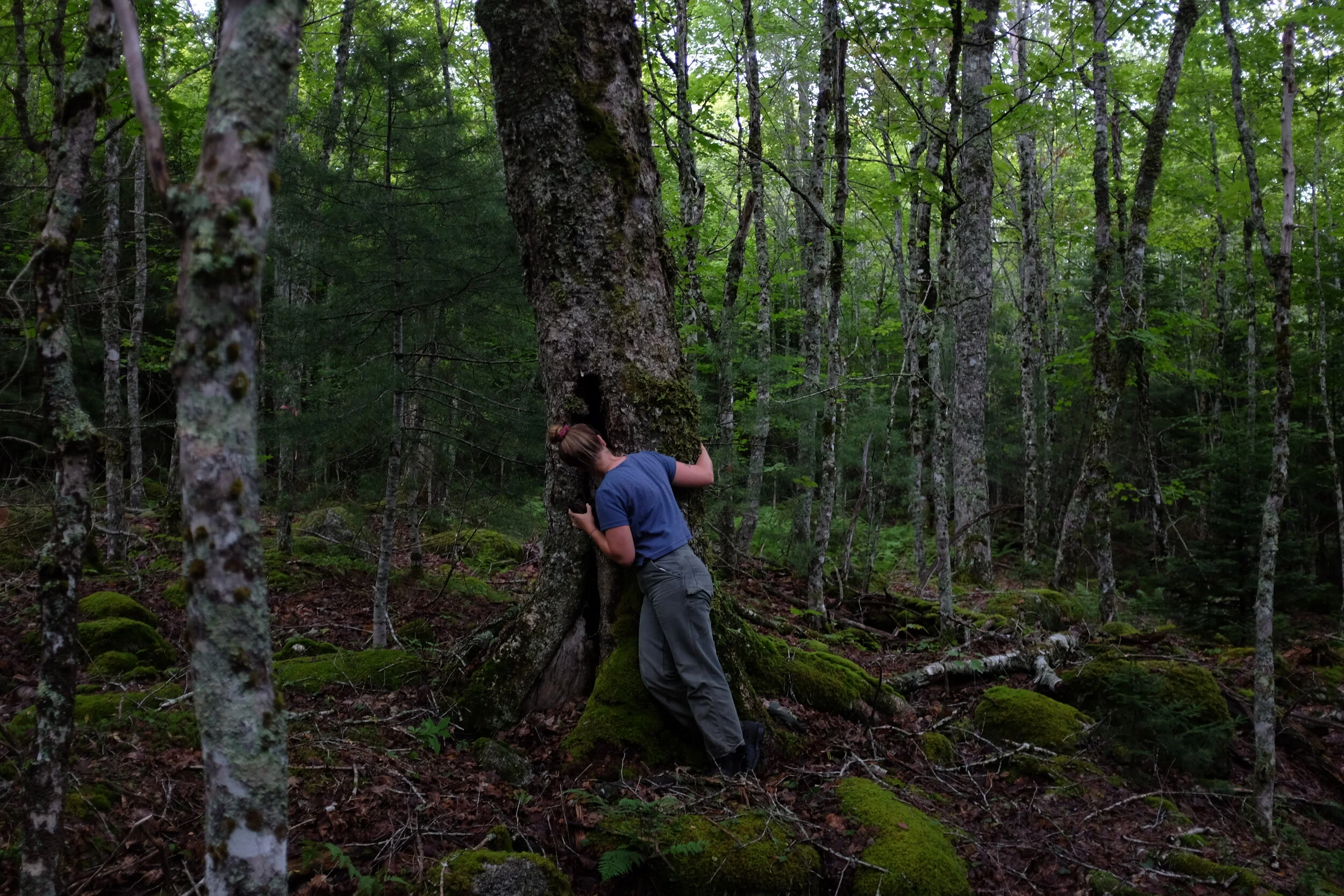The MCFC license area is often made available to education and extension institutions to provide learning and research opportunities.
the following are current and past research projects, if you’re interested in conducting research on the mCfc license area, contact us today.
Biodiversity Study
In 2019, the MCFC began looking into the possibility of conducting a biodiversity and ongoing forest health study for the entire 15,000 ha license area. To help develop the project, the MCFC hired Jennika Hunsinger, a Masters student from the University of Toronto’s Faculty of Forestry for as our forest research intern. Initial field work sampled over 25 plots within the MCFC, and sampling will occur every 5 years. Specific measurables examined include: bird abundance, mammal abundance, ground vegetation, ecological integrity, tree diversity and health.
read the full biodiversity study here
Summer research intern, Jennika Hunsinger checking out an old yellow birch in one of her biodiversity plots.
Former ED, Mary Jane Rodger measuring understory vegetation density.
Hemlock Woolly Adelgid
Hemlock Woolly Adelgid (HWA) poses an immediate threat to hemlock forests in Nova Scotia. With our research we aim to test silviculture treatments as a means to reduce impacts of HWA on tree growth and survival, and counter changes in biodiversity in infested stands. Hemlock supports species at risk in the Acadian Forest region and represents a large portion of remaining old growth forests. Silviculture treatment of hemlock stands may help promote resiliency as HWA spreads across NS. This project is in partnership with the Canadian Forest Services, the Mersey Tobeatic Research Institute, Parks Canada, Westfor Management Ltd. and the NS Department of Lands and Forestry. If you own a property with hemlock and are interested in participating in the study contact us today.
If you have hemlock trees that you’re monitoring - use this decision key to help assess tree health. Trees with less than 55% crown density may be too far in decline for treatment options to help protect the tree against HWA.
HWA nymph feeding at the base of needles on a hemlock. At this life stage, the black nymph growing a white-woolly sac to protect it from cold during the winter.
An example of some of the beautiful hemlock old growth forest that surround the MCFC, this stand in particular is in the Snowshoe Lakes Nature Reserve.
Sporting Lake Nature Reserve Hemlock Treatment Pilot
The Sporting Lake Nature Reserve consists of 24.7 ha of remote wilderness that supports some of the last intact natural forest in Kespu’kwitk (southwestern Nova Scotia). The reserve consists of three islands on Sporting Lake, located roughly 14 km west of the south boundary of Kejimkujik National Park and National Historic Site. The largest of the three islands offers a rare glimpse of Acadian forest as it once existed across vast expanses of Nova Scotia.
A diverse group of dedicated volunteers came together in the Fall of 2021 to make this research and treatment pilot possible. MCFC supported the project by coordinating volunteers for the on-site treatment. The old growth hemlock stand was inoculated with an approved insecticide, IMA-jet during the month of October under a research license attained through the Department of Environment and Climate Change. The ultimate goal is to keep the hemlock alive for a decade or longer until a safe and effective long-term solution is found that allows the hemlocks to survive on their own once again.
Read the full project report here.
Old hemlock tree with IMA-Jet canisters for Hemlock Woolly Adelgid treatment, fall 2021.
Paddling into Sporting Lake to help with treatment over the Thanksgiving weekend.
Spruce/Pine Forest Management
In partnership with the Nova Scotia Department of Lands and Forestry and Westfor Management Ltd. we’re testing different ways to manage our spruce/pine forests to promote natural Acadian Forest conditions. Specifically the treatments with this research trial are; a seed tree harvest, a clear-cut removal that leaves large white pine trees as seed for regeneration, a strip cut with thinnings, and a treatment that combines thinning with small patch cuts. We’re excited to continue to sample this site as it regenerates.
Early sampling has indicated that all treatments have increased density of white pine post-treatment. All treatments will be continually monitored over time to measure changes in growth in residual trees and variability in seedling regeneration.
Aerial view of the MCFC Spruce-Pine research trial.
Operations map of the MCFC Spruce-Pine research trial.
Post-Fire Tree Regeneration
In 2016, a portion of the MCFC license area was damaged during an intense forest fire known as the Seven Mile Lake Fire. Since the fire, we’ve been working with a senior environmental science class to measure the health of regenerating and planted trees in the post-fire landscape.
From initial results, seedling health of both white pine and spruce seedlings to date seem to be successful. Health index scores tend to rank higher for both species and there is a high percentage of new growth evidence for both white pine and spruce. The data collected will be used as a base to monitor growth rates and health success over subsequent growing seasons for seedlings and can be useful in determining future success rates and reforestation plans.
Research tour following the Seven Mile Lake forest fire.
Tree planters from Community Forest Canada helping reforest following the Seven Mile Lake fire.
Carbon Sequestration
As a manager of an extensive land base, we have the ability to look into ways to build climate-smart forestry practices into our everyday operations. In anticipation of future market opportunities, the MCFC worked with Dalhousie University’s Management without Borders class to conduct research on the policy implications of sequestering carbon on Crown Lands in Nova Scotia. Along with this project, we’re working to develop a pilot for climate forest management in a portion of our license area.
Read the full report from Management without Borders here.
Management without Borders students with their Crown and Carbon research poster at Dalhousie University in December 2017.












